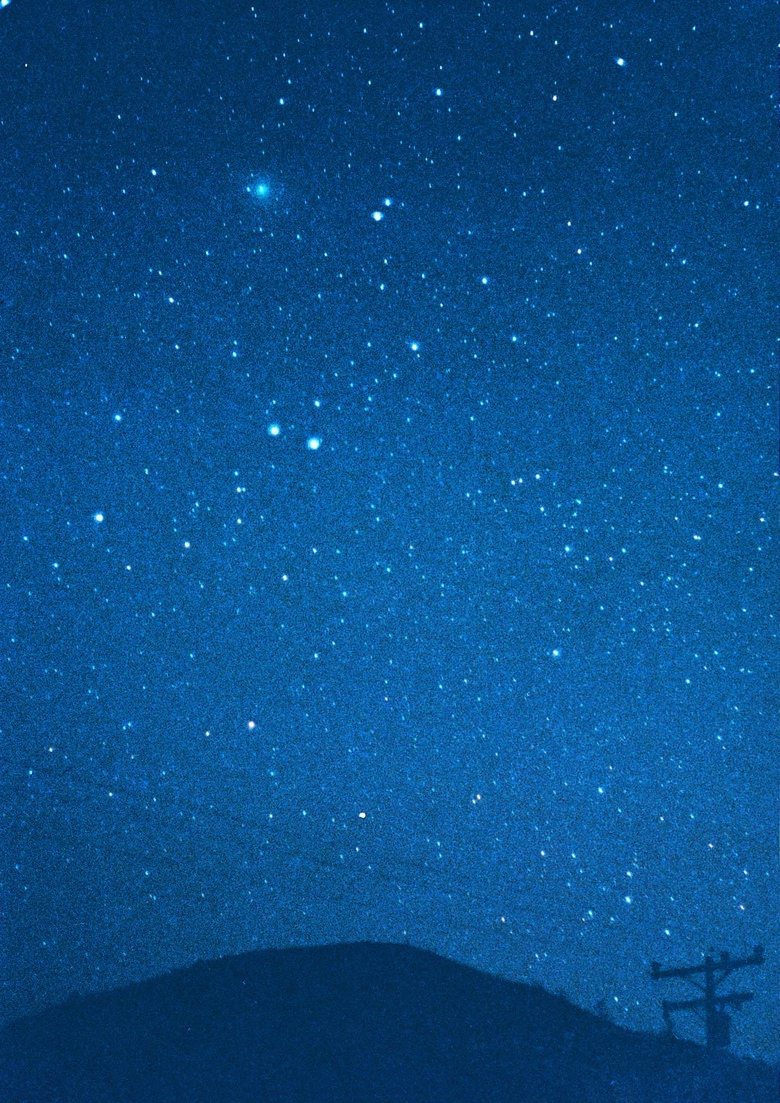The Hardest Constellations To See
Looking up at the sky, many constellations, or groups of stars, are easy to pick out. The Big Dipper and Orion in the northern hemisphere are made up of bright stars in a clear pattern, making them a great choice for beginning stargazers. Other constellations are made up of fainter stars with less clear patterns and are more difficult to find in the night sky. Being able to see a constellation also depends on where you are on the planet since you can only see a subset of the 88 recognized constellations from either hemisphere.
The Constellation Lynx
The Constellation Lynx
Lynx is a constellation in the northern hemisphere that was named based on how hard it is to see. Johannes Hevelius created the constellation from the stars between the constellations Ursa Major and Auriga during the seventeenth century. He named it Lynx because you would have to have that animal's sharp eyesight to spot it in the night sky and possibly as a reference to Lynceus, a figure from Greek mythology with the greatest eyesight in the world.
The Constellation Mensa
The Constellation Mensa
The constellation Mensa has the honor of being the dimmest constellation in the night sky. Mensa is also located very near the South Pole, next to the constellation Octans. It was named after Table Mountain in South Africa. The brightness of objects in the sky are measured on a logarithmic scale where the sun has a value of -26 and you cannot see anything higher than 6 without binoculars from even the darkest rural areas. The brightest star in Mensa is rated a barely visible 5.
The Constellation Monoceros
The Constellation Monoceros
The constellation Monoceros is more commonly known as the Unicorn. Monoceros was named by Petrus Plancius in the seventeenth century because of biblical references to the mythological beast. It lies on the celestial equator, near Orion, and can be seen from much of the planet in February, if you have keen eyes. Only a few of the stars in Monoceros are visible to the naked eye, with the brightest, alpha Monocerotis, rated 3.9=.
The Constellation Equuleus
The Constellation Equuleus
The constellation Equuleus, or Little Horse, is a constellation in the northern hemisphere and takes the form of a small horse head next to the head of Pegasus. Small is the operative word for this constellation, which is the second smallest of the recognized constellations. Equuleus is also fairly faint, with its brightest star, Kitalpha, rated at 3.9. The provenance of the constellation is attributed variously to Celeris, Pegasus's brother or offspring, a horse speared by Poseidon or Hippe, a centaur who hid in the sky to avoid her father's wrath at her pregnancy.
Cite This Article
MLA
Becker, Andrea. "The Hardest Constellations To See" sciencing.com, https://www.sciencing.com/hardest-constellations-see-17239/. 24 April 2017.
APA
Becker, Andrea. (2017, April 24). The Hardest Constellations To See. sciencing.com. Retrieved from https://www.sciencing.com/hardest-constellations-see-17239/
Chicago
Becker, Andrea. The Hardest Constellations To See last modified March 24, 2022. https://www.sciencing.com/hardest-constellations-see-17239/
